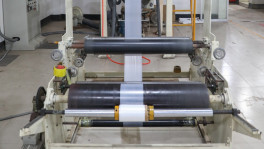Apparel exporters on a tightrope ride
A fresh wave of Covid-19 in China, the main source of garment raw materials, has added to their concerns about the future production

With surging production costs not matching the prices offered by global buyers, Bangladeshi apparel exporters are walking a tightrope amid uncertainty over survival in the long run by overcoming these challenging times.
Already grappling with gradual hikes in raw material prices, sky-high freight charges and increase in domestic utility tariffs, the apparel sector's profit margin has dwindled, and pouring export orders are not ensuring their business viability, industry people say.
A fresh wave of Covid-19 in China, the main source of garment raw materials, has added to their concerns about the future production.
Apparel Industry leaders have told The Business Standard that many readymade garment exporters in the country are now struggling to break-even.
"As if we are running on a treadmill, achieving nothing except burning out calories," said Mohammadi Group Director Navidul Huq, describing the hardship they are going through.
Local value addition in the country's RMG industry has dropped to its lowest level in the wake of the upsurge in production costs, they said, adding they are continuing with this business with the only anticipation that situation will improve once the Covid pandemic is over.
Economists, however, have observed that some European countries and the US are grappling with high inflation rates not seen for the last 40 years which might adversely impact the global economy as well as apparel exports growth.
In the meantime, China's biggest city and financial powerhouse Shanghai began a two-stage lockdown last week following the country's worst outbreak since the onset of the pandemic in Wuhan in late 2019, which has already started to affect the raw materials supply chain.
China caters to 60% to 65% of the Bangladesh apparel sector's need for raw materials. But the lockdown in Shanghai is causing the shipments of raw materials, documents, and samples – both by air and by sea – to take almost four times longer than usual to arrive in Bangladesh, according to industry insiders.
On the other hand, clothing manufacturers have no choice but to deliver goods by air to ensure on-time delivery of their export products which is hurting their bottom lines.
Work orders galore, prices not rising much
Pointing at the precarious situation the apparel exporters are in, Navidul Huq, director of Mohammadi Group, told TBS, "We apparel exporters are in a marathon race. We are speeding up ourselves through exporting more, but are not able to achieve anything except for burning out while spinning wheels.
Further explaining the situation, he said they take orders and fix product prices calculating the current production costs but cannot raise product prices even if production costs go up because of hikes in raw material prices or for other reasons following the confirmation of an order.
"We have no scope to negotiate prices if raw materials become costlier after the confirmation of any orders. Manufacturers have to accept that loss," said Navidul Huq, also a director of the Bangladesh Garment Manufacturers and Exporters Association (BGMEA).
Echoing Navid, Md Ashikur Rahman (Tuhin), managing director of TAD Group, said the apparel exporters are now enjoying a good flow of orders from buyers as it is the peak production time to gear up for next season but the buyers are not paying in line with the increases in production costs.
Manufacturers who work on the basis of Freight on Board (FOB) arrangement are under pressure due to raw materials prices hike, while those who work on the basis of Cost of Making (CM) arrangement are under pressure because of a rise in freight charges, he added.
Siddiqur Rahman, chairman of Starling Group, said RMG manufacturers should continue production even if they incur losses because factory closures lead to more financial losses for them.
The industry had been enjoying a good inflow of work orders from the EU and US markets, but the recent Russia-Ukraine war has broken the rhythm as many buyers from the EU have businesses in these two countries, he added.
The US market is continuing to grow but buyers there are not agreeing to increase product prices in line with the surging raw materials prices and other costs, said Siddiqur, also a former president of the BGMEA.
Value addition hits record low
According to the Bangladesh Bank's data, value addition in the RMG sector dropped to 55.80% in the July-December period of the current 2021-22 financial year, which was 63.37% in the first half of the previous fiscal.
Mohammad Hatem, executive president of the Bangladesh Knitwear Manufacturers and Exporters Association (BKMEA) told TBS that the value addition ratio likely went down even more in January-March this year as raw materials prices soared further during the period.
As explanation, he said, "For example, earlier we used to get $3 as the cost of making a dozen T-shirts when the accumulated cost of fabrics, accessories and other work was $12 at that time. Due to the recent hikes in raw materials prices, these costs have crossed $15 but the buyers pay us the same cost of making."
Kutubuddin Ahamed, chairman of Envoy Textile Ltd, also attributed the fall in value addition rate to an increase in prices of raw materials on the global market.
The prices of cotton and yarn have been on the rise for a long time. Freight cost also has increased by about five times. But product prices are yet to be adjusted."
"Many entrepreneurs are running their factories at break-even costs, while some others are not being able to log even the break-even costs. But they are continuing their business hoping for a recovery when the pandemic situation normalises," he added.
Rising freight charges are a major challenge for the export-import trade, he mentioned, adding entrepreneurs should wait until the global shipping situation normalises, said Kutubuddin, also a former president of the BGMEA.
Shams Mahmud, managing director of Shasha Denim Mills Ltd, said, "Buyers determined prices of goods at the beginning of the season, with which they set up inventory plans across the stores. When production costs started to go up, buyers, therefore, could not make any upcharge, and manufacturers had to let that portion go out of their profit margins."
Also, the moratorium on bank repayments was relaxed, which put added stress on the exporters, he said, adding that because of almost a 70% average escalation in prices of raw materials, large companies began to face the problem of exceeding the single borrower exposure limit with banks.
He explained this by giving an example. "If $1 million was the cost of producing 500,000 yards of fabric before, now we need $1.7 million to manufacture the same order. So, one can clearly see that value addition is being eroded as buyers could not adjust prices mid-season," he said.
"Taking all these factors into account, we can sadly forecast that in this year's data we will see lower value addition than before as the costs of inputs are hurting our competitiveness."
The apparel exporter, however, expressed hope that the government in the forthcoming national budget will announce policy support for this industry, which will help it make the transition easier and remain competitive in the years ahead.
Production costs likely to escalate further
Mohammad Ali Khokon, chairman of Makson Group, said the cotton index has again reached its highest ever level, which might lead to further increase in yarn prices.
According to Bloomberg, the ICE cotton index reached a decade-high of 141.80 cent per pound on 31 March this year.
Besides, power tariffs are likely to increase in the country if the government implements the gas price hikes proposed by the government agencies concerned, which also will push up the raw material prices, said Khokon.
Rising inflation a new threat
Mohammad Abdur Razzaque, chairman of the Research and Policy Integration for Development (RAPID) Bangladesh, told TBS that the whole world is facing an inflation trend which may affect the global apparel demand.
Enterprises having large-scale production capacity may manage to stay afloat despite hikes in prices of raw materials, but smaller companies will find it tough to survive, he observed.
He also mentioned that policy support of any particular government cannot prove adequate to address a global problem such as the surging global commodity prices.
Shanghai lockdown deals fresh blow
Mohammad Hatem of the BKMEA mentioned that the Covid-19 induced lockdown in Shanghai port has forced him to import fabrics through air freight, and yet he is facing difficulties in getting the imported goods released in the absence of documents.
"Shipping documents are still stuck in Shanghai as the city is under strict lockdown. Besides, importing goods by air will further increase my production costs."
Pointing at the disrupted shipping service by the sea, he said generally, faster vessels take 12 days and slower vessels take 20-25 days to reach Chattogram port from Shanghai, but they will now take more time because of the lockdown, he added.
"We know how to survive in tough situations"
Fazlee Shamim Ehsan, vice president of the BKMEA, however, said apparel entrepreneurs have learned how to survive in any adverse situation.
"We managed to survive following the withdrawal of the Multi-Fibre Arrangement (MFA) quota.
"We are always focusing on survival in any adverse situation instead of making profits and that is what helps us retain buyers' confidence."
In July-February of FY22, readymade garment shipment saw about 30% growth to $27.49 billion over the corresponding period in the previous year, according to data published by the Export Promotion Bureau (EPB).


 Keep updated, follow The Business Standard's Google news channel
Keep updated, follow The Business Standard's Google news channel
















